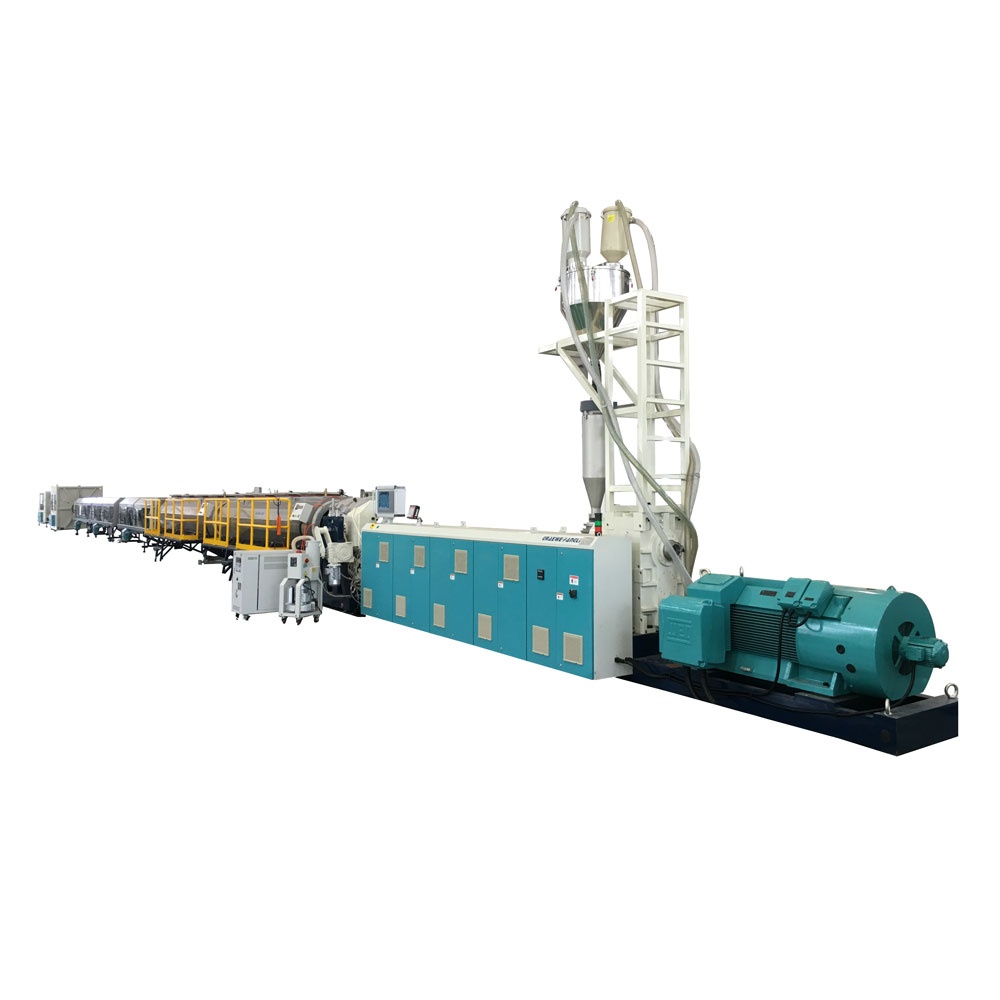What are the main stages in the PE pipe extrusion process?
2024-06-28
The PE (Polyethylene) pipe extrusion process involves several main stages, each critical to the production of high-quality pipes. Here are the key stages:

1. Material Feeding and Melting:
- Hopper and Feeder: Polyethylene pellets or granules are fed into the extrusion line through a hopper. The feeder controls the rate at which the material enters the extruder.
- Extruder Barrel and Screw: The material is conveyed through a heated barrel by a rotating screw. As it moves through the barrel, it is heated and melted to form a uniform molten polymer.
2. Extrusion:
- Die Head: The molten polymer is forced through a die head, which shapes it into a continuous pipe. The die determines the diameter and wall thickness of the pipe.
- Calibrator: The extruded pipe passes through a calibrator, which cools and sizes the pipe to the desired dimensions.
3. Cooling:
- Cooling Baths or Sprays: The extruded pipe is cooled rapidly to solidify its shape. This is typically done using water baths or cooling sprays.
- Vacuum Tanks: In some systems, vacuum tanks are used to help maintain the shape and size of the pipe during cooling.
4. Haul-Off (Puller):
- Haul-Off Unit: The solidified pipe is pulled through the extrusion line at a consistent speed by a haul-off unit. This ensures that the pipe maintains a uniform size and shape.
5. Cutting:
- Cutting Machine: The continuous pipe is cut into specified lengths by an automated cutting machine. The cutting process can be synchronized with the extrusion speed to ensure precision.
6. Inspection and Quality Control:
- Quality Control Systems: Various inspection systems check the pipe for defects such as surface irregularities, dimensional inconsistencies, and other quality parameters. Non-destructive testing methods are often employed.
7. Coiling or Stacking:
- Coiler or Stacker: Depending on the pipe size and application, the finished pipes are either coiled for easy transportation and handling or stacked in lengths for shipment.
8. Marking and Printing:
- Marking Systems: Pipes are often marked with important information such as manufacturer details, pipe specifications, and standards compliance. This is typically done using inkjet printers or other marking systems.
These stages work together to ensure the efficient and consistent production of high-quality PE pipes suitable for various applications, including water supply, gas distribution, and industrial piping systems.


